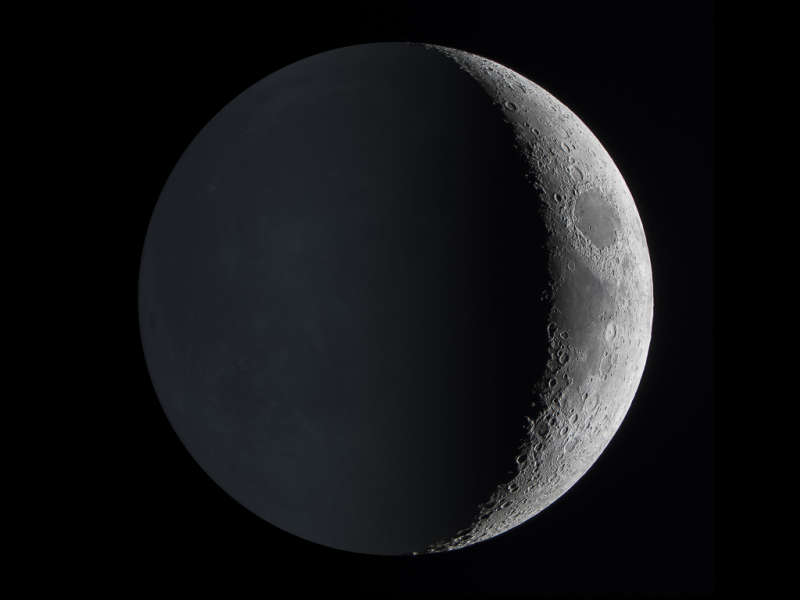Credit & Copyright: Dylan O'Donnell
Explanation:
Today's date
marks an Equinox and a New Moon.
Remarkably, while the exact timing of both
geocentric
events occur within a span of only 13 hours,
the moon also reaches its new phase only 14 hours after perigee, the
closest point in its orbit.
That makes the Equinox New Moon the largest New Moon of 2015,
though hard to see since that lunar phase presents the Moon's
dark, night side to planet Earth.
Still, in
this well composed image
of a young lunar phase from late January
you can glimpse both night and day on the lunar surface,
the night side faintly illuminated by Earthshine next to the day side's
brightly sunlit crescent.
But some will see today's
Equinox New Moon in silhouette!
The Equinox Solar Eclipse will be total across stretches
of the Arctic Ocean,
visible in partial phases from Europe, northern Africa
and western Asia.
1999 2000 2001 2002 2003 2004 2005 2006 2007 2008 2009 2010 2011 2012 2013 2014 2015 2016 2017 2018 2019 2020 2021 2022 2023 2024 2025 |
Январь Февраль Март Апрель Май Июнь Июль Август Сентябрь Октябрь Ноябрь Декабрь |
NASA Web Site Statements, Warnings, and Disclaimers
NASA Official: Jay Norris. Specific rights apply.
A service of: LHEA at NASA / GSFC
& Michigan Tech. U.
|
Публикации с ключевыми словами:
Moon - equinox - solar eclipse - perigee - Солнечное затмение - новолуние - Луна - Равноденствие - перигей
Публикации со словами: Moon - equinox - solar eclipse - perigee - Солнечное затмение - новолуние - Луна - Равноденствие - перигей | |
См. также:
Все публикации на ту же тему >> | |
